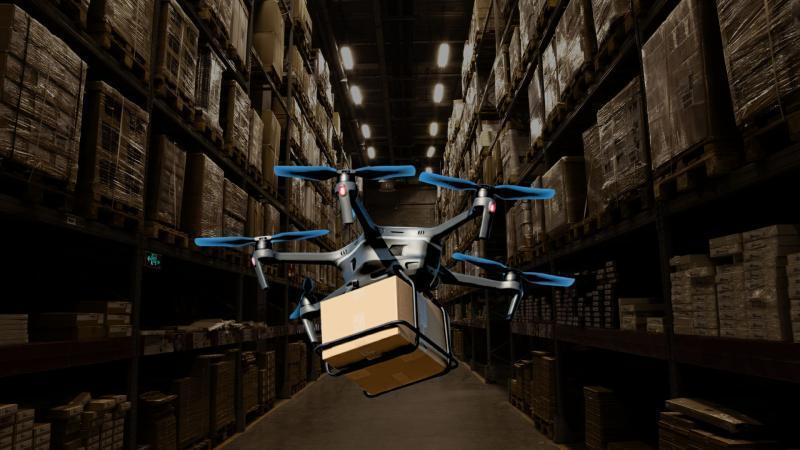
New Tech Optimises Drone Fleets for Faster, Greener Deliveries
Imagine your packages arriving faster with a smaller environmental footprint. This is no longer a distant dream, thanks to new research that tackles the Drone Warehouse Problem, a crucial logistics challenge. By optimising drone delivery schedules, warehouses can efficiently manage varied drone fleets, ensuring parcels reach you quickly. This is a significant step towards scalable, sustainable last-mile delivery solutions for all.
To understand the significance of this breakthrough, let’s first consider the challenge. As e-commerce continues to grow, the demand for fast and efficient delivery has increased. Drones have emerged as a promising solution to address this need, offering the potential for faster and more cost-effective deliveries. However, managing a fleet of drones to ensure timely and reliable delivery has proven to be a complex problem.
The Drone Warehouse Problem refers to the difficulty of scheduling and dispatching drones to pick up and deliver packages from warehouses to customers. This involves complex calculations to determine the most efficient routes, taking into account factors such as weather, traffic, and drone capacity. The problem becomes even more challenging when multiple drones need to be managed simultaneously, each with its own unique characteristics and constraints.
To tackle this challenge, researchers have developed a novel algorithm that optimises drone delivery schedules. This algorithm, which is the result of a collaborative effort between researchers from the University of California, Los Angeles (UCLA), and the University of California, Berkeley, uses machine learning and artificial intelligence to determine the most efficient routes for drones to take.
The algorithm, known as the “Drone Warehouse Optimisation Algorithm,” uses a combination of historical data and real-time information to predict demand and adjust schedules accordingly. By analysing data on weather patterns, traffic congestion, and customer demand, the algorithm can identify the most efficient routes for drones to take, ensuring that packages are delivered quickly and reliably.
The benefits of this algorithm are numerous. For one, it allows warehouses to manage multiple drone fleets more efficiently, reducing the need for additional resources and infrastructure. This is particularly important for smaller warehouses, which may not have the resources to invest in multiple drone fleets or dedicated infrastructure.
Secondly, the algorithm can help reduce the environmental impact of drone deliveries. By optimising routes and reducing the number of drones needed, the algorithm can help reduce emissions and lower the carbon footprint of deliveries.
Finally, the algorithm can help improve customer satisfaction. By ensuring that packages are delivered quickly and reliably, the algorithm can help reduce the likelihood of delays and lost packages, leading to higher customer satisfaction ratings.
The potential applications of this technology are vast. For e-commerce companies, it could mean faster and more reliable delivery options for customers. For logistics companies, it could mean more efficient use of resources and reduced costs. And for the environment, it could mean a reduction in emissions and a smaller carbon footprint.
As the demand for fast and efficient delivery continues to grow, the need for innovative solutions like this algorithm will only continue to increase. By optimising drone delivery schedules and reducing the environmental impact of deliveries, we can create a more sustainable and efficient logistics system for the future.
Source:
- “Novel Algorithm Tackles Drone Warehouse Problem for Faster Deliveries” – https://researchmatters.in/news/novel-algorithm-tackles-drone-warehouse-problem-faster-deliveries






